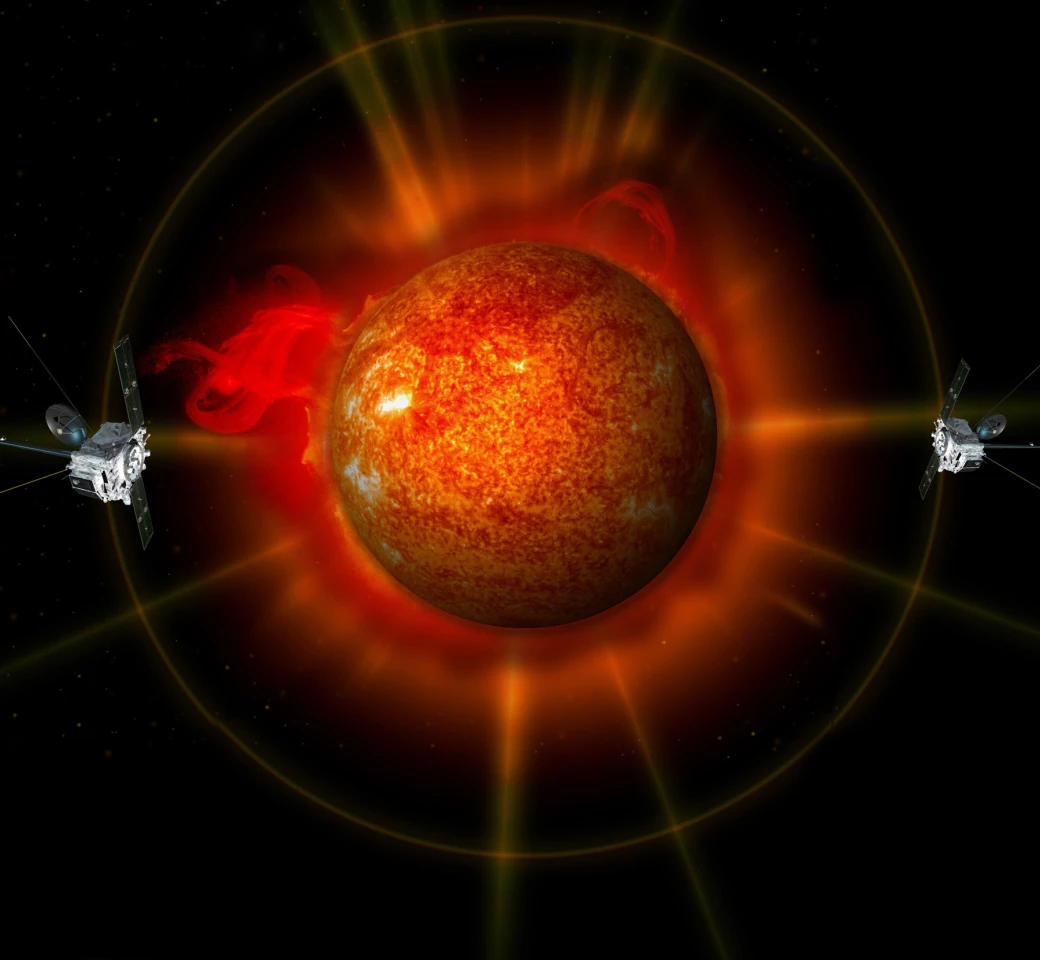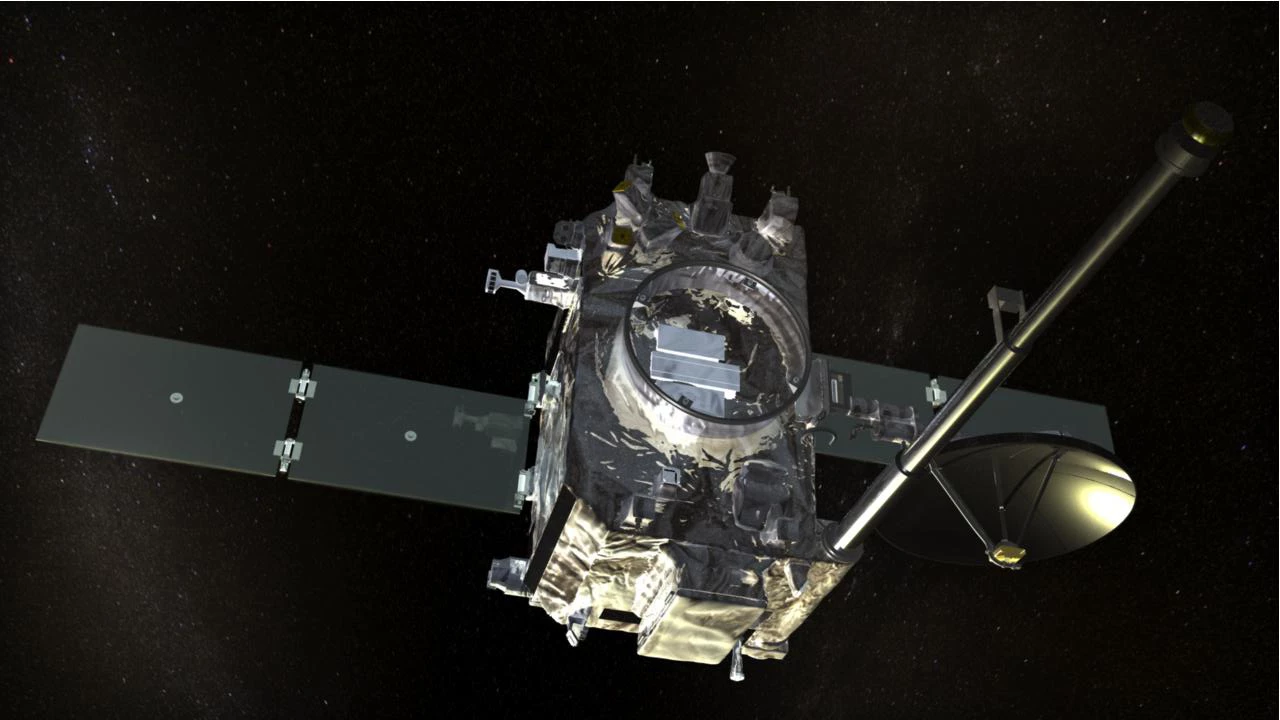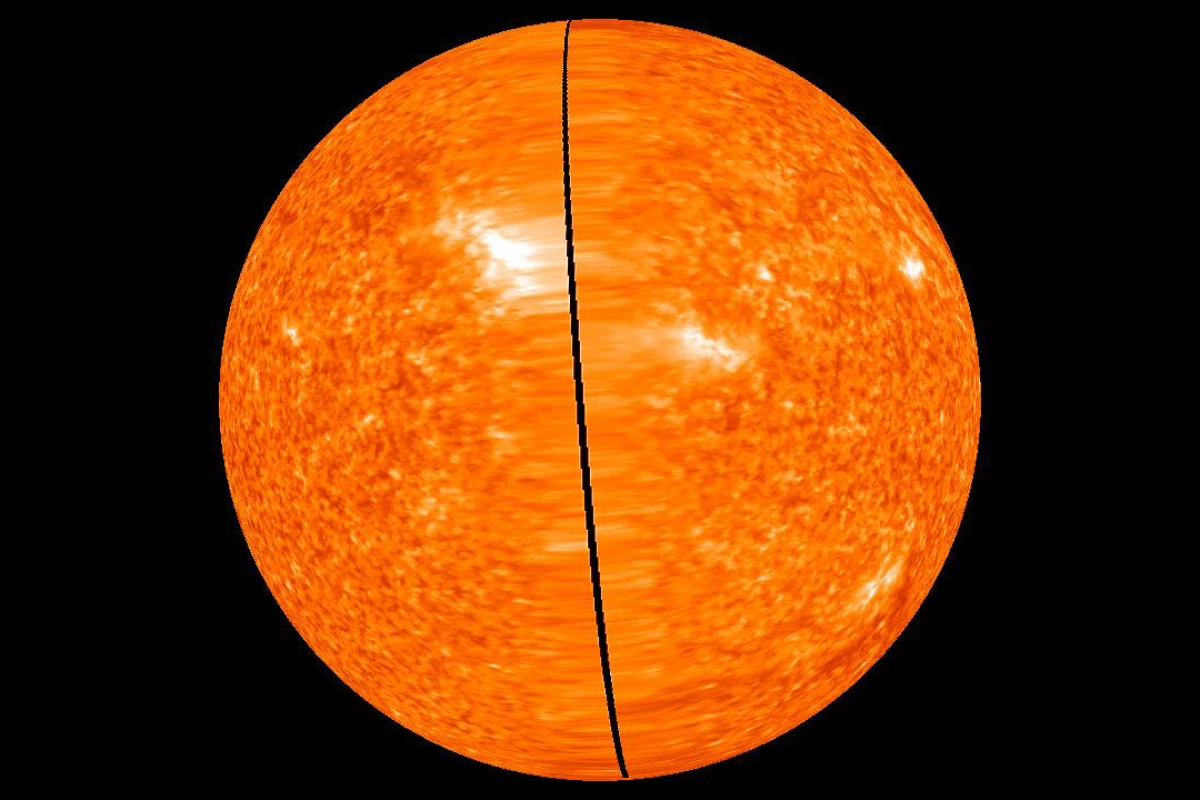On October 26, 2006, NASA launched two STEREO (Solar Terrestrial Relations Observatory) spacecraft. Using the Moon’s gravity for a gravitational slingshot, the two nearly identical spacecraft, STEREO-A and STEREO-B, split up with one pulling ahead of the Earth and the other gradually falling behind. It’s taken over four years but on February 6, 2011, the two spacecraft finally moved into position on opposite sides of the Sun, each looking down on a different hemisphere. The probes are now sending back images of the star, front and back, allowing scientists for the first time to view the entire Sun in 3D.
Each of the probes captures images of half of the Sun and beams them back to Earth where researchers combine the two opposing views to create a sphere. To track key aspects of solar activity such as flares, tsunamis and magnetic filaments, STEREO’s telescopes are tuned to four wavelengths of extreme ultraviolet radiation.

Space weather forecasting
The resultant 3D images will allow researchers to improve space weather forecasts to provide earlier and more accurate warnings for potentially damaging coronal mass ejections (CMEs) that can impact aircraft navigation systems, power grids and satellites. Previously, an active sunspot could emerge on the far side of the Sun before the Sun’s rotation turned that region toward Earth, spitting flares and clouds of plasma with little warning."Not anymore," says Bill Murtagh, a senior forecaster at the National Oceanic and Atmospheric Administration’s (NOAA) Space Weather Prediction Center in Boulder, Colorado. "Farside active regions can no longer take us by surprise. Thanks to STEREO, we know they're coming."
As part of NASA’s ‘Solar Shield’ project, the NOAA is already using 3D STEREO models of CME’s to improve space weather forecasts, but the full Sun view should improve these forecasts even more. And the forecasting benefits aren’t just limited to Earth. The global 3D model of the Sun also allows researchers to track solar storms heading for other planets, which is important for NASA missions to Mercury, Mars and even asteroids.

"With data like these, we can fly around the Sun to see what's happening over the horizon—without ever leaving our desks," says STEREO program scientist Lika Guhathakurta at NASA headquarters. "I expect great advances in theoretical solar physics and space weather forecasting."
More answers
NASA also expects the 3D images of the Sun to shed light on previously overlooked connections. For instance, researchers have long suspected that solar activity can “go global,” with eruptions on opposite sides of the Sun triggering and feeding off each other. The global images will allow them to actually study the phenomenon.In conjunction with NASA’s Earth-orbiting Solar Dynamics Observatory, the STEREO-A and STEREO-B probes should be able to image the entire globe of the Sun for the next eight years. Therefore, these initial images are just the beginning of what should be some truly stellar images and movies that NASA says will be released in the weeks ahead as more of the data from the STEREO probes is processed.





